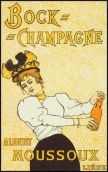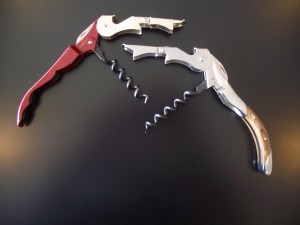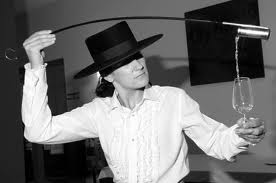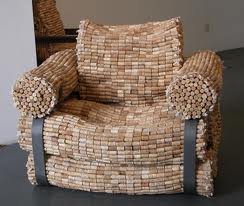SOME DOS AND DON’TS FOR WINE COLLECTORS–PART III
PART III – Serving Wine
In this final installment of our three-part series we will discuss dos, don’ts, and tips for serving wine. We’ll cover serving temperature, opening and decanting, glassware, and clean-up.
It’s amazing how often wine is served too warm or too cold–even in restaurants, where they should know better. Reds are often served too warm and whites too cold, and in either case the wrong temperature will adversely affect the flavors and aromas of the wine in front of you.
Red wine served too warm tends to accentuate alcohol and produce an unpleasant bite on the palate. And you don’t want to serve full-bodied or sweet whites too cold, as the cold tends to mute flavors and aromas. On the other hand if you’re drinking a simple, inexpensive white or rosé serving it very cold is OK; the cold temperature will keep it refreshing and can hide a host of sins.
So a few easy guidelines for serving wine at the proper temperature:
- Reds should be served at 60-65F, and even cooler for light-bodied reds such as Beaujolais. If you suspect your wine is too warm put it in the fridge for 20 minutes before serving. And if you’re in a restaurant, don’t hesitate to ask for an ice bucket. Your wine will taste better and maybe it will send a message to management that they need to work on their service. What’s the best way to warm up a glass of wine that’s too cold? Your hands. Just cup the bowel of the glass in your hands until it reaches the temperature you want. No tools required.
- White and sparkling wines can be served at 45-50F, but this is a generalization.
 As we mentioned, full-bodied whites such as California chardonnays and French white burgundies, Sauternes and late-harvest Rieslings can be served warmer to bring out their best.
As we mentioned, full-bodied whites such as California chardonnays and French white burgundies, Sauternes and late-harvest Rieslings can be served warmer to bring out their best.
- Make sure sparkling wine is well chilled before twisting off the cork; you want a quiet pop and not an explosion. If you’re using an ice bucket add water and a pinch of salt to the ice to speed up the cooling process (it’s about physics and heat transference, but suffice it to say it works).
Opening and decanting (or not): You can open most reds an hour or two in advance to let them breathe and develop bouquet. Decanting serves two purposes: the first is to separate the wine from any sediment that normally forms in older wines and the second is to fully aerate the wine. Fact is you will almost never go wrong by decanting any full-bodied wine, young or old, red or white. Just the act of pouring it into the decanter and exposing the wine to more air is more effective in developing bouquet than simply popping the cork and letting the wine sit. The only time you might not want to decant is with a very old, fragile wine that has delicate flavors and aromas that quickly dissipate after opening—think 50+ year-old Bordeaux or other classic wines with long legs.
Decanting wine off its sediment is more involved but it’s no mystery. Show and tell is the best way to demonstrate proper decanting so click here to see how it’s done. And if you’re not up to decanting wine off its sediment you can always use a wine basket.
You always want to decant Vintage Port; they throw a lot of sediment and the sediment itself can form a dollop of sludge at the bottom of the bottle, something you definitely don’t want in your glass. Use a couple layers of cheese cloth over the mouth of the decanter to catch any sediment globs. Go here to see a demonstration.
A word about corks: large format bottles and some of the more expensive French reds  often have longer corks so you need a corkscrew with a long worm to get through the cork. Over the years corks can degrade in the bottle (especially with Port) and you need to be careful when pulling the cork so as not to break it. Torque is your worst enemy when pulling a fragile cork, so use a device that pulls the cork straight out of the bottle and doesn’t bend it. If a waiter’s corkscrew is your weapon of choice you should check out Pulltap’s, who make corkscrews with a two-step, hinged lever that prevents bending and breaking older corks. The Pulltap’s also has a Teflon coated 5-turn worm that is long enough to fully penetrate those extended corks. And if the sucker does break, you can often retrieve the piece stuck in the bottle with an Ah-So, the two-bladed life-saver designed for small emergencies such as this.
often have longer corks so you need a corkscrew with a long worm to get through the cork. Over the years corks can degrade in the bottle (especially with Port) and you need to be careful when pulling the cork so as not to break it. Torque is your worst enemy when pulling a fragile cork, so use a device that pulls the cork straight out of the bottle and doesn’t bend it. If a waiter’s corkscrew is your weapon of choice you should check out Pulltap’s, who make corkscrews with a two-step, hinged lever that prevents bending and breaking older corks. The Pulltap’s also has a Teflon coated 5-turn worm that is long enough to fully penetrate those extended corks. And if the sucker does break, you can often retrieve the piece stuck in the bottle with an Ah-So, the two-bladed life-saver designed for small emergencies such as this.
 Glassware: Using attractive glassware is a fundamental part of wine service, but observing the ritual can go from the sublime to the ridiculous. Everyone knows about the benefits of oval shaped glasses that are large enough to hold 3-4 ounces of wine with enough room left to swirl and sniff the wine. And we don’t question that certain shapes are better to showcase the aromas of certain wines. We just don’t tie ourselves in knots over it. ‘Nuf said.
Glassware: Using attractive glassware is a fundamental part of wine service, but observing the ritual can go from the sublime to the ridiculous. Everyone knows about the benefits of oval shaped glasses that are large enough to hold 3-4 ounces of wine with enough room left to swirl and sniff the wine. And we don’t question that certain shapes are better to showcase the aromas of certain wines. We just don’t tie ourselves in knots over it. ‘Nuf said.
Leftovers: If you want to keep leftover wine, remember that prolonged exposure to oxygen eventually ruins wine. A good way to minimize this exposure is to transfer the leftover wine to a smaller container, say from a 750ML bottle to a 375ML bottle. Cork it and place it in the refrigerator to slow the oxidative process. Depending on the wine, it will remain drinkable for a few days to a few weeks, but it will definitely lose some of the nuance and flavor it showed at first opening.
Cleaning up: Don’t use dish soap to clean wine glassware as it can leave residual odors. Rather hand-wash your glasses in very hot water and rinse and dry with a lint-free cloth. Don’t store them upside down on any surface that might transfer odors to the glass. And experience has taught us to wait until the next morning to wash, rinse and dry a dinner table full of fine wine glasses. The survival rate is much higher…
Thanks to Jancis Robinson, the well-known British wine writer, we discovered a novel way to clean decanters, which by their shape almost defy normal cleaning methods. Just drop a denture cleaning tablet into the stained decanter filled with warm water and leave it overnight. Next morning, voilà!
Spills: Would they never happen but of course they do, so be prepared. Wine Away works well on red wine stains, but if you need an industrial strength cleaner we recommend Stain Rx. Make sure to follow directions, it’s potent stuff.
We would love to hear your ideas about serving wine. How do you clean your glassware? Do you know any shortcuts to bringing wine to the right serving temperature? How about decanting? Please post your comments below!
Finally, if you’re wondering what to do with all those corks…



